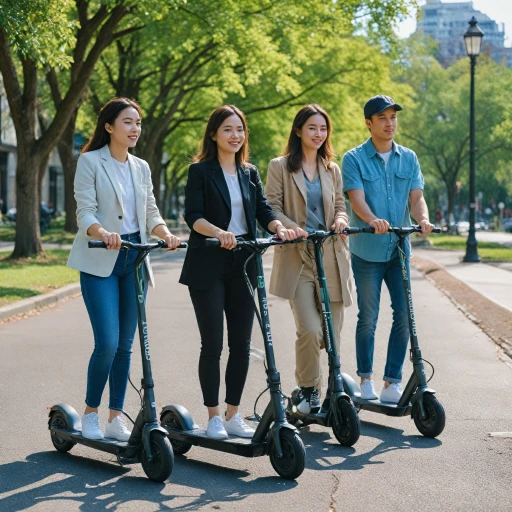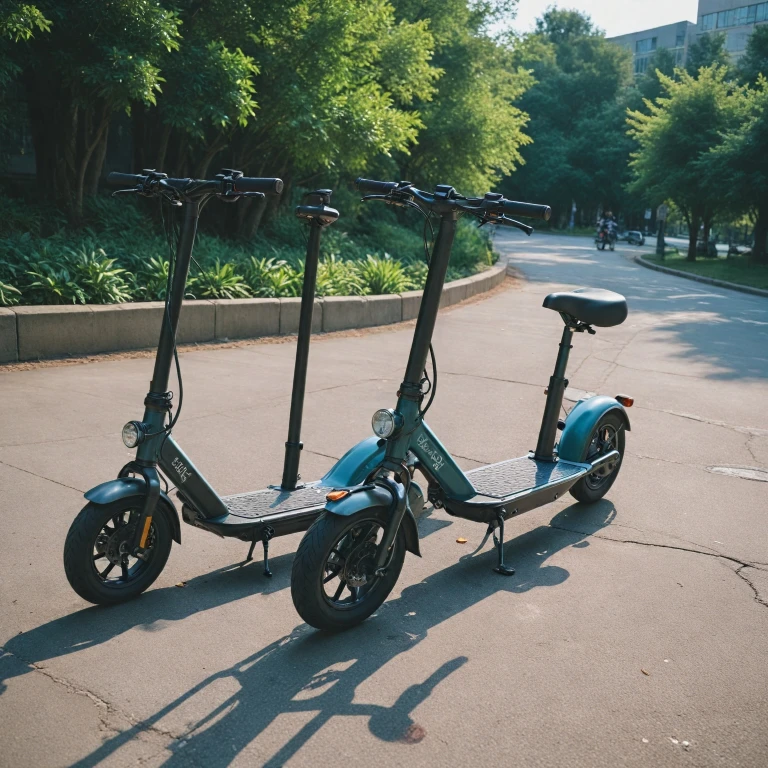Understanding the Basics
The Basics of Riding Electrified Options
Electric scooters and electric bikes are two popular choices for personal electric transportation. At their core, both types of vehicles utilize an electric motor to provide propulsion. However, there are some distinct differences that can affect your riding experience and suitability to your lifestyle.
Electric scooters are often compact and convenient for short-distance commutes and urban environments. They typically feature a deck for standing, a handlebar for steering, and a battery-powered motor, allowing for effortless rides at impressive speeds. Most scooter models have a range of up to 20 miles, though high-end variants may offer even further distances per charge.
On the other hand, electric bikes, or e-bikes, come in various designs that often resemble standard bicycles. They provide both pedal assist and throttle, offering flexibility for different terrains and riding styles. E-bikes generally have a longer range compared to scooters, with some models able to travel up to 50 miles on a single charge.
While deciding between these two, one has to consider their primary purpose and the specific constraints of their location. Electric scooters typically offer a lower top speed than e-bikes, usually around 15-20 mph. E-bikes can reach higher velocities, potentially surpassing 28 mph depending on the model.
Both options reflect an eco-friendly mode of transportation with significantly lower environmental impact compared to traditional fossil-fuel-powered vehicles. Compliance with local regulations is crucial to ensure safety and legality, especially in states like Florida where motorized scooter regulations are well-defined. To understand these requirements better, consider reading more about
Florida's motorized scooter regulations.
Cost Considerations
Evaluating Financial Factors
When deciding between electric scooters and e-bikes, cost considerations play a significant role in guiding your choice. Both types of personal electric vehicles (PEVs) offer unique financial implications depending on various factors like the initial purchase price, maintenance, and operational expenses.
Here are some key points to consider:
- Purchase Price:
- Electric scooters generally have a lower initial cost compared to electric bikes. However, high-end scooter models with enhanced features can rival the cost of mid-range e-bikes.
- E-bikes, especially those with advanced pedal assist systems and longer range capabilities, can be significantly more expensive.
- Maintenance Costs:
- Due to their simple design, electric scooters might incur lower maintenance costs compared to ebikes which have more complex components like gears and chains.
- However, battery replacement is a common expense for both bikes and scooters, depending on usage and battery lifespan.
- Operating Expenses:
- Both scooters and bikes are cost-effective compared to traditional gasoline-powered vehicles. The cost of charging an electric battery is minimal compared to fuel expenses.
- Riding habits and terrain can affect the efficiency of both types of vehicles, influencing overall costs over time.
- Additional Expenses:
- Accessories and safety gear are necessary for both electric scooters and bikes, adding to the overall expenditure. Helmets, lights, and locks are essential for safe riding.
For further insights into how these factors weigh into your decision-making, this resource on
choosing between an ebike and a scooter can provide a more comprehensive overview.
Understanding these financial aspects will better prepare you to make an informed choice tailored to your budget and lifestyle. Keep in mind that while the upfront cost is a major consideration, planning for future expenses can ensure a sustainable and enjoyable transport solution.
Environmental Impact
Eco-Friendliness of Electric Options
The environmental impact of transportation is a growing concern, and both electric scooters and electric bikes offer green alternatives to traditional gas-powered vehicles. Made possible by their electric motors and rechargeable batteries, these personal electric vehicles promote cleaner air by significantly reducing carbon emissions.
Electric scooters, with a compact build, usually result in less material use during production compared to their larger e-bike counterparts. Additionally, they consume less energy due to factors like lower weight and often limited
top speed compared to electric bikes.
Electric bikes, on the other hand, may offer more flexibility through pedal assist features, enabling riders to cover greater distances (up to several miles) without fully relying on battery power. This means that users can switch between pedal and electric modes, potentially conserving battery life and reducing overall energy consumption.
It's important to note that the manufacturing process, battery recycling, and energy source for charging can all affect the eco-friendliness of these vehicles. Both electric scooters and bikes are usually charged using the electric grid, which may derive from both renewable and non-renewable sources. As renewable energy sources continue to expand, the environmental benefits of these electric personal transportation options are likely to increase.
For further details on key components and environmental considerations of electric scooters, you can explore the
essential components for your Surron electric scooter.
Safety and Regulations
Regulations and Safety Guidelines
When assessing whether electric scooters or electric bikes suit your transportation needs, it's crucial to consider safety and regulations. Depending on your location, the legal landscape surrounding these personal electric vehicles can vary significantly. Here's a closer look at what you should factor in to ensure compliance and safety.
- Legal Requirements: Both electric scooters and bikes often have specific rules governing their operation. Typically, these regulations include the need for a helmet, age restrictions, and potentially a license for certain speed capacities or motor power. While some regions enforce stricter policies, others offer more freedom for riders. It’s essential to familiarize yourself with the local legislature to avoid any legal repercussions.
- Safety Concerns: Safety should always be your priority, whether you’re cruising on a scooter bike or riding an electric bike. Personal electric vehicles frequently share roadways or bike paths with traditional commuters. Wearing protective gear, including helmets and reflective clothing, is imperative. Additionally, understanding your scooter’s top speed and braking capabilities can be lifesaving in high-traffic situations.
- Infrastructure Compatibility: The infrastructure for bikes and scooters varies widely. While some cities accommodate bike lanes on major roads, others may have limited infrastructure. Determining whether your usual routes support safe electric scooter use or if they pose risks is critical in making an informed decision.
- Maintenance and Reliability: Maintaining your electric vehicle is also part of staying safe. Regular checks on the electric motor, battery capacity, and brakes will ensure your ride remains a reliable mode of transportation.
Road safety and regulatory understanding are pivotal factors when deciding between electric scooters and bikes. Always consider these aspects to complement your budget constraints, environmental concerns, and performance expectations.
Assessing Performance and Travel Capacity
When considering electric scooters and bikes (also referred to as ebikes), one vital aspect to evaluate is their performance and range. Both vehicles are powered by an electric motor, but their differences in design and utility significantly influence how they perform and how far they can travel on a single charge.
Firstly, electric scooters typically have a shorter range compared to electric bikes. Depending on the model, scooters might cover between 20 to 40 miles before requiring a recharge. This range is sufficient for short commutes and urban transportation, where frequent stops are involved. In contrast, electric bikes can travel further, often between 40 to 60 miles, and some advanced models can reach even higher ranges. This is mainly because bikes benefit from pedal assist, allowing riders to extend their journey by pedaling alongside motor power.
Another critical difference is the speed. Electric scooters usually offer a top speed between 15 to 30 mph, providing a leisurely yet efficient ride through city streets. On the other hand, electric bikes often reach speeds of 20 to 28 mph, with some performance models going faster. This makes bikes a faster option for covering longer distances swiftly.
It's essential to acknowledge that the range and speed capabilities vary not only based on the vehicle choice but also on factors like battery capacity, motor power, terrain, rider weight, and weather conditions.
In terms of performance metrics, scooters generally excel in urban environments with their agility and compact size. They allow for easy maneuvering in traffic and can be stored effortlessly due to their minimal footprint. Bikes, while slightly bulkier, offer better long-distance capabilities and a more robust build, which can be advantageous for riders seeking stability.
In conclusion, the decision between scooters and bikes will largely depend on your specific transportation needs, lifestyle, and the locations where you'll be riding. Whether you seek quick, convenient city travel or longer, more traditional biking trips, the electric vehicle landscape offers solutions tailored to diverse preferences. Understanding these nuances can significantly impact your riding experience.
User Experience and Convenience
Practicality and Comfort in Daily Commutes
Electric scooters and e-bikes both cater to unique needs when it comes to daily commuting. With compact designs, electric scooters are often favored for short-distance travel. Their lightweight nature makes them convenient for quick errands or navigating through crowded areas. Folding options add an extra layer of ease, allowing users to carry them into public transportation systems or store them easily under desks.
On the other hand, electric bikes offer more comfort over longer distances thanks to their pedal assist features and seating arrangements. For those with commutes that span several miles, this combination of motor support and the option to pedal can be both physically engaging and less tiring compared to continuous standing on a scooter.
Speed and Power Dynamics
When evaluating speed, the electric motor power plays a significant role. Personal electric vehicles like scooters typically offer a top speed of around 15-20 mph, while e-bikes can range up to 28 mph depending on the model and the assist level. This could influence your choice based on how fast you need or prefer to travel.
However, consider the legality of speed limits in your area since some regions have restrictions on the maximum speed for both e-bikes and e-scooters. Balancing speed preferences with regulations contributes to a more pleasant and stress-free ride.
Maneuverability and User Interaction
Navigating urban environments is where scooters and e-bikes showcase distinct advantages. Scooters’ compact size allows for nimble dodging of traffic congestion or accessing paths not easily reached by larger vehicles. This makes them a favorite for quick rides through busy cityscapes where tight turns and sudden stops are a norm.
Conversely, electric bikes provide a more traditional biking experience, suitable for situations where you'd prefer continuous manual engagement and exercise. Some riders might appreciate the capability to manually pedal whenever desired, offering additional control over the speed and range.
In summary, both e-bikes and scooters present compelling options for personal transportation. Your choice hinges upon factors like travel distances, speed preferences, and riding comfortabilities as elaborated in earlier sections.

